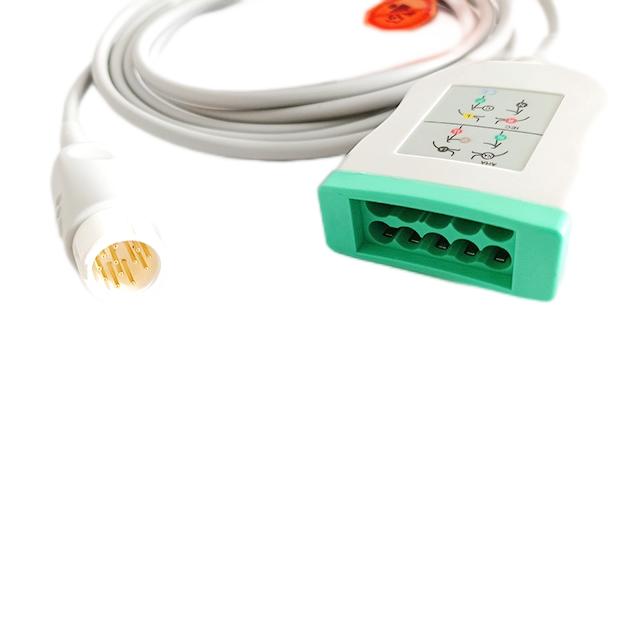
Analysis of pairing problems between ECG cables and ECG instruments
2024-03-21 00:04:27
Exploring the Various Issues and Solutions

ECG (electrocardiogram) cables and instruments play a crucial role in monitoring heart health and diagnosing cardiac conditions. However, the process of pairing ECG cables with ECG instruments can sometimes be challenging, leading to potential issues in signal quality, compatibility, and overall functionality. This analysis delves into the common pairing problems encountered in the field of ECG monitoring and provides comprehensive insights into their causes and potential solutions.
1. Compatibility Issues: Ensuring Seamless Pairing
One of the most prevalent challenges in pairing ECG cables with instruments is compatibility. Different ECG instrument models may have varying connection interfaces, making it difficult to establish a seamless connection. Additionally, technical advancements and evolving standards further contribute to compatibility concerns.
To address this issue, manufacturers must ensure standardization of connection interfaces, such as adopting widely accepted industry standards like USB or Bluetooth. Regular firmware updates to address compatibility gaps and clear documentation about instrument compatibility can also assist healthcare professionals in overcoming these compatibility challenges.
2. Signal Quality Problems: Enhancing Data Accuracy
Poor signal quality is another significant problem when pairing ECG cables with instruments. Common issues include electronic interference, noisy waveforms, and electrode connectivity problems. These signal quality challenges can lead to inaccurate readings, misinterpretations, and compromised diagnosis.
Solutions to enhance signal quality include the use of high-quality cables with proper shielding to minimize interference. Implementing advanced signal processing algorithms within ECG instruments can help filter out unwanted signals and improve the accuracy of readings. Regular maintenance and calibration of ECG cables and instruments are also essential to ensure optimal signal quality.
3. User Interface Challenges: Streamlining Pairing Process
A complex user interface can pose difficulties in pairing ECG cables with instruments. Cumbersome pairing processes, non-intuitive interfaces, and insufficient user guidance may hinder smooth and efficient connectivity.
Developing user-friendly interfaces with clear instructions and intuitive designs can simplify the pairing process. Implementing automated pairing functionalities and easy-to-understand visual cues can significantly enhance user experience and reduce the chances of errors during the pairing process.
Conclusion
The pairing between ECG cables and instruments is critical for accurate cardiac monitoring. Understanding and addressing the challenges associated with compatibility, signal quality, and user interface can greatly improve the overall pairing process. By adopting standardized connection interfaces, enhancing signal quality, and streamlining user interfaces, healthcare professionals can ensure seamless and reliable pairing, ultimately improving the effectiveness and efficiency of ECG monitoring.
Get the latest price? We'll respond as soon as possible(within 12 hours)




